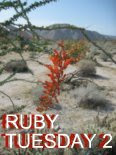Who doesn't want a cup of coffee! Everybody wants a cup, and most often another few cups per day. I guess this is one of the most famous drinks of all time. In the last few years, a lot of coffee shops sprouted here in the country, triggered by the foreign coffee shops you are most familiar with.
In the past there are no coffee shops here, as purely coffee shops. Coffee is just in restaurants, offered as drinks, together with other recipes. But that doesn't mean we don't have it. It has been here for centuries, mostly introduced during the colonization period by the Spaniards. History says it is brought here in 1784, and my province was the first biggest producer. It produced the traditional coffee blend we locally call "Barako", and is now being promoted by one of the biggest coffee shops here "Figaro". I guess 'kapeng barako' can very well be an intellectual property right as Geographic Indication.
My father being a heavy coffee drinker planted a lot of coffee plants in our property. So we basically are coffee drinkers starting from childhood. As kids we also had our share of harvesting and processing coffee beans. But when father died, the trees are not cared for anymore, and we don't process our own coffee too. The small harvests are now sold as dry beans, to the assembler wholesalers who buy from small producers.
A young coffee tree, 'Arabica' variety
A blooming coffee tree will not pass unnoticed. The scent is so mildly sweet specially in the mornings. And the white blooms are so beautiful.
young immature berries line every branch and every leaf axils
When properly tended and fertilized, every branch is laden with fruits.
A neglected tree in our property showing very few fruits in a plant, not all branches have fruits.
This is the 'Liberica' variety famous in the country as 'kapeng barako', planted and popularized in my province. 'Barako' is a local term for male animal, which might be the term given to describe the strength of this coffee. It is said that there are only two countries where this variety is successfully cultivated. The other varieties are Excelsa, Robusta, Arabica. Blends from these varieties make excellent aroma and brew, and the proportion of the variety makes for a particular type of blend. I specifically like more of the Arabica variety, although we were so used to the Liberica variety because Arabica grows in colder conditions.

Sundrying coffee berries in cement structures takes a few days, the length depends on the intensity of the sunlight and temperatures. Cloudy skies lengthens drying and lessens the quality of the dried coffee beans. It should well be taken care well not to catch any drizzles or rain, as moisture will allow fungus infection on the drying pulp. However, this might not give bad effects on the coffee beans as their seed coats are very thick and hard for the fungus to enter. But care is given not to incur unsightly appearance. Modern coffee plantations use electric driers for their harvest.
Further processing of the sundried coffee berries include depulping, cleaning, roasting, grinding before we get the coffee brew most of us normally clamour for!

These are fallen flowers of 'Liberica' coffee variety, the scent is still soothingly strong even at this stage.
Come, let's have a cup of coffee, everybody is invited!
Now here are my Two Questions for the Thursday Two Questions Meme:
1. Have you personally seen a coffee plant?
2. Can you relate your cup of coffee to the plant?













































